Welcome to Home Appliance Review. Today, we are reviewing the iRobot Roomba J7 Plus, which is the replacement for the i7 Plus, feeling like it’s been around forever now. It’s probably, well, at least arguably, the best-selling robot vacuum of all time, largely because it was also the first to have an auto-empty dock.
Design of the iRobot Roomba J7 Plus

We’ve had the J7 Plus for a while now, but if we think back to our first impressions, the very first thing that we noticed was that the base is tiny. It’s much, much smaller than what you get an impression of from the photos, and it looks really cool instead of a clunky-looking thing. It feels like it’s really one unit now.
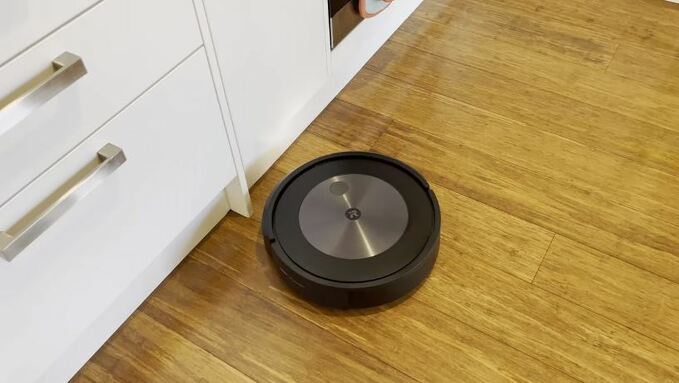
And the robot itself, We feel like we’ve been saying this in all the article lately, but it looks really cool. we think that these robot vacuum companies have finally stopped letting the software designers do the design of it, and so they’re starting to look cool. It’s got some cool textures on the top; it looks solid, like a real appliance.
New Features
What’s actually new? The very first thing that we notic is that it no longer has a camera looking up at the ceiling. It’s navigating on a front-facing camera. Rather than looking for things to navigate on the ceiling as reference points, it’s actually looking at the room.
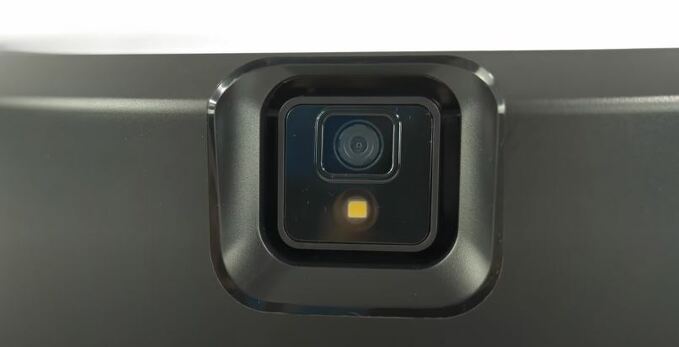
And it also means that it’s the first Roomba to have obstacle avoidance, which just means that things on the ground that it might otherwise get stuck on, it can see them and avoid them. iRobot is calling this new front-facing obstacle avoidance “precise navigation,” and they’re so confident in it that if your robot runs over dog poo, they’ll actually replace the whole robot.
While the Roomba Combo j7+ is cleaning, it’s going around the room and looking for items, referencing back to an image library, looking for things that are poo-shaped, or cables, etc. Over time, they’re going to continue to update this library, so it’ll have a huge library of obstacles that it would like to avoid.
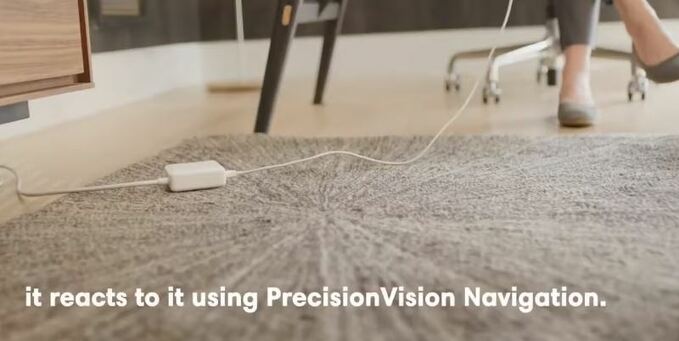
You can also opt in to get photos sent of things that are on the floor that the robot thinks is a bit of a risk that it’s going to get stuck on, so you can make your house totally Roomba-proof. They’ve also removed this little beacon sensor here, which has been on pretty much every other recent Roomba. This detects those virtual beacons, but there’s no real reason why you need them anymore with app barriers instead. It was also used to detect where the base is; however, now with the front-facing camera, they instead look for the QR code.
It also comes with updated Genius 3.0, and the updates mean that you can now use your smart home system to voice command the Roomba to go and clean under the dining room table rather than just doing the whole dining room.
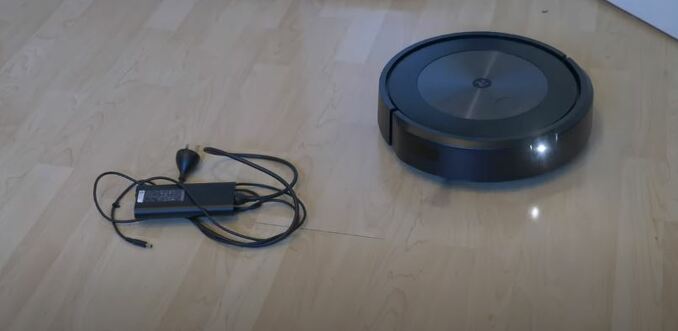
It also has a quiet drive mode, and what this means is that if you want to clean at night, it’ll switch off the vacuum when it transitions between two separate areas. It also gives you cleaning time estimates, so it gives you a rough idea of how long it’s going to take to clean each area. It also has a bag holder for your spare dust bags, which is kind of handy.
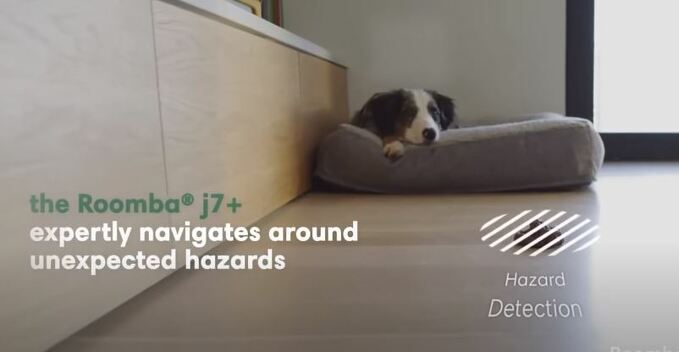
It’s also the quietest robot that we’ve tested because it actually has reduced airflow, which is the opposite direction that most other brands are taking. But it still does really well on the vacuuming performance, as you’ll see later on, due to some of the other innovations.
Navigation

As we said, one of the biggest differences is the camera is now front-facing, and we think that they’ve opted to do this because they’re relying more and more on that floor tracking optical sensor on the bottom of the robot. As a result, the front-facing camera is better to look for obstacles on the ground and is a secondary positional navigation system.
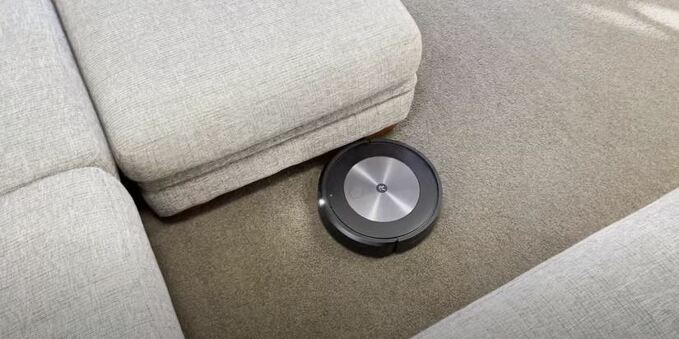
This means that while the Roomba’s creating its map, it’s a little bit more clumsy, a little less satisfying than some other options on the market. Just to be clear, the robot will cover the whole room, and it is still pretty methodical, but it’s a little bit jerky, and it’s not quite as satisfying to a robot geek like me. However, you’re probably not going to really care if you’re out laying on the beach.
Auto-empty dock
The auto-empty station is using a totally new design, but it still uses the same system to actually empty the robot.
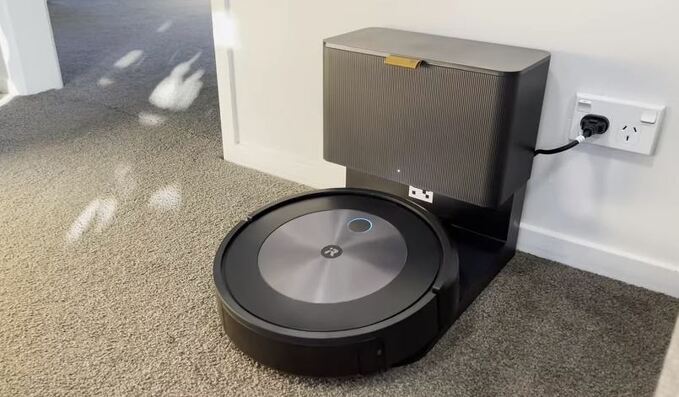
When the robot returns to base to charge itself, it will empty itself out through this port, and it will be sucked through the base into here, and the base itself can hold up to 60 days of cleaning. we absolutely love the design of the base. It’s really small and compact.
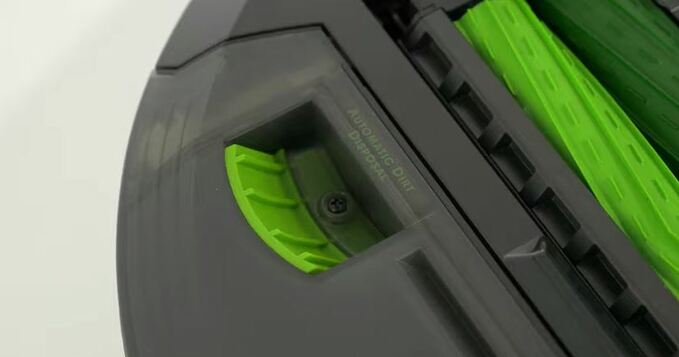

It didn’t make sense that in the past, they were tall and skinny because it actually meant that it was taking up a lot more visual space in your house because the robot was the same width anyway. It feels a lot more compact, and it’s fitting a lot more in because it also holds the spare dust bags.

The little details like this little leather tag are really cool with the embossed iRobot logo. It just feels like this is probably the way that they should all be going. The iRobot auto-empty stations have always been really good compared with some of the other competitor options.
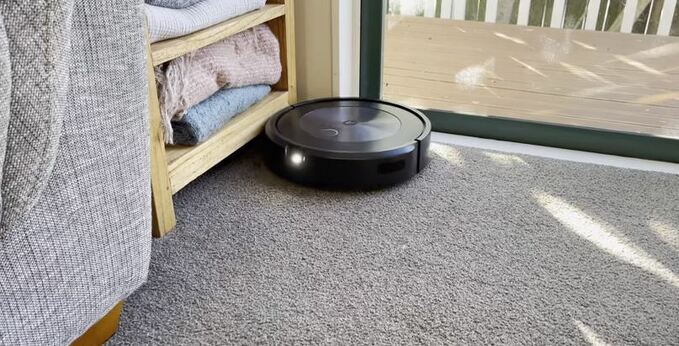
They don’t seem to get stuff jammed even if they get really full, and this is partly down to how it empties itself, but it’s also partly down to the dustbin full sensor on the iRobot, which is a patent. This means that the robot will detect when the dustbin is full and return to base before it compacts it too much to actually be able to extract it.
Cleaning tests
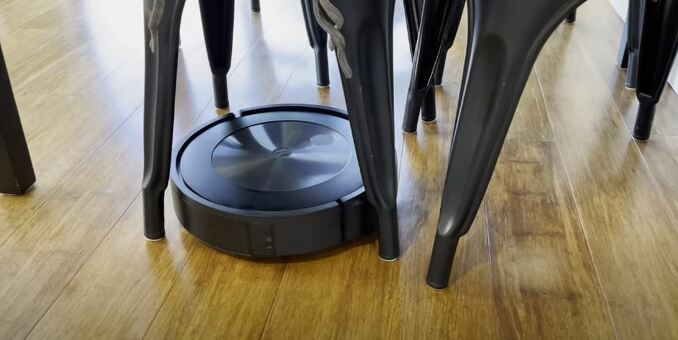
An interesting thing is that while all the other brands are competing for higher and higher suction figures, iRobot is still relying on patents that allow them to clean smarter and not harder. As a result, they haven’t even published the suction figures for the Roomba Combo j7+, and the airflow is significantly lower than most other options in its price range. Instead, they have patented the dual roller brush.
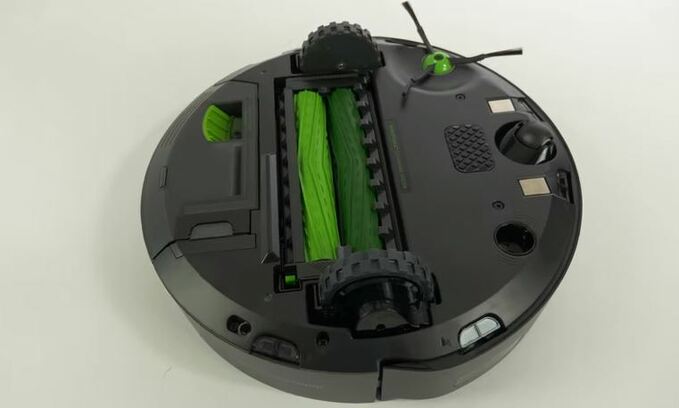
Self-cleaning station
The theory is that the first brush goes over and loosens any hair or debris, and the second scoops it up into the dustbin.

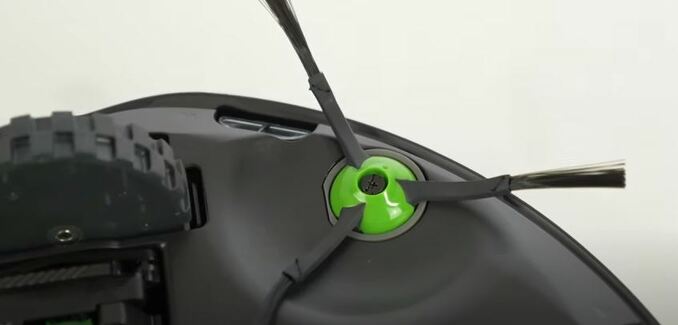
Things like pet or human hair obviously don’t take much suction power because they’re very light, but they do tend to get caught in the carpet fibers. A single rubber brush is usually about 15 to 20 percent worse at picking up pet hair than the more common bristled brush, but because the rubber brush only gets a fraction of the hair tangled, there’s still a better option in most homes. The double roller brushes on the Roomba do slightly better than a single bristled brush while still not getting any hair tangled. It’s definitely the best option for pet hair on carpet.

As a result, the J7 got 100 of the piles of hair that we tested on it, and 90 percent of it made it into the dustbin without wrapping on the brush. Because it’s not relying on suction power, it’s by far the quietest iRobot that we’ve ever tested, way, way quieter than the previous 900 series. We found it was 62 decibels, which is quiet enough to have it going while you’re home and watching TV. It still does really well at deep cleaning on fine and large debris. We tested it with seeds on a medium to deep pile carpet, and it removed all of them.

But when we weighed the results, it only got 90 percent into the dustbin because quite a lot got stuck to the brushes. we think this is probably due to static buildup on the rubber, and it’s probably a fairly unique situation due to the types of seeds we’re using.
And it did work well in the real world. Again, it was working smarter, not harder, and it was helped out by the Dirt Detect feature, another iRobot patent. Essentially, when the robot detects that the dustbin is filling more quickly, it will repeat that area until the debris is removed from the floor.
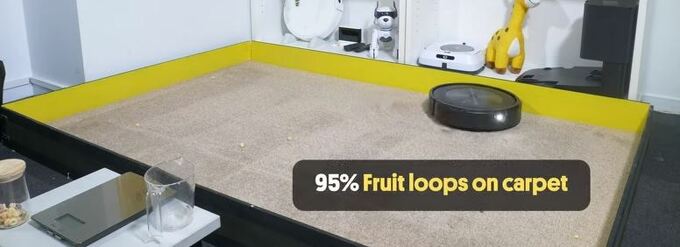
To test its performance on larger debris, we used fruit loops. We found that we had to turn the object avoidance off in the app for this test because it was a bit too sensitive and was actively avoiding some of them, thinking it was something that it could potentially get stuck on. Once we switched it off, we found that it did a perfect job, probably the best or equal to the best that we’ve ever tested. On the hard floor, we also used fruit loops, and again, it got them all without any trouble. The side brush is effective, and it doesn’t flick stuff everywhere like some of its competitors.
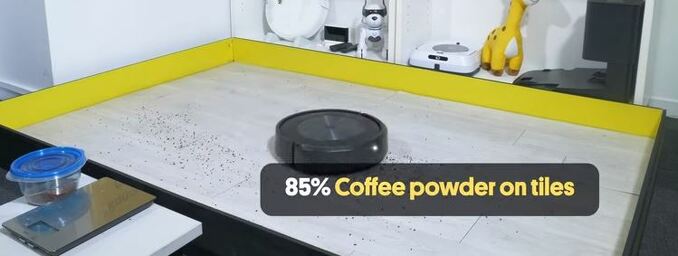
It only has one side brush, but remember, it will always align that same side to the wall, so a second one is actually unnecessary. It got 85 percent of the coffee powder that we spilled. This is the only test we found where the dual roller brushes don’t really help much, as it’s more likely to crush it than sweep it. And instead, it relies on suction power. Again, in the real world, it’s not a huge issue, but don’t pick the J7 to clean the floors of your coffee roastery.
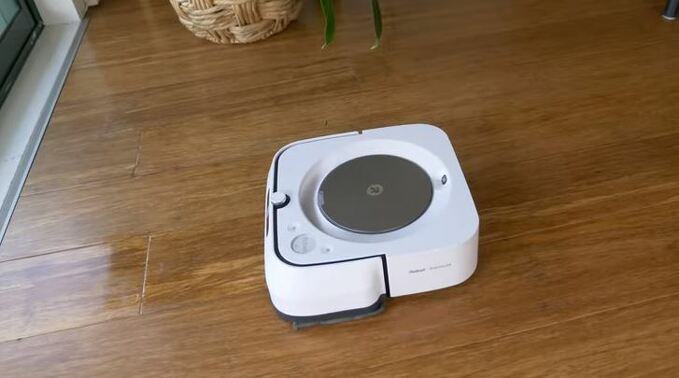
Related Review: iRobot Roomba Combo j9 Plus: A good robot vacuum for plush carpets
Recommendations
So overall, it’s a pretty huge step up from the iRobot Roomba J7 Plus. The obstacle avoidance means that it’s that little bit more convenient, and you don’t have to do as much house prep before each clean. It does a pretty good job, particularly compared with other competitors, at avoiding things on the ground.

The increased battery life, up to 100 minutes, means that it’s better at cleaning bigger houses without having to return to base and recharge itself all the time. The iRobot patents are still just as valid as ever, with the dual rollers doing a particularly good job on the vacuuming performance.
The dust detect sensor means that it is better at emptying the dustbin, and it won’t continue to try and clean once it’s full. It can detect dirt on the ground and will pay more attention to those particularly dirty spots.

The navigation software has improved, but again, they’ve always been covering the whole area, so it’s not that big of a deal. It will do a good job.
In a way, we think that the iRobot is kind of like an iPhone compared with an Android. It’s easier to use, does the fundamentals really well, and it’s definitely the best option on the market for carpets.
As a result, we’d really recommend this robot in houses that are predominantly carpeted and large. It’s particularly good for people who have kids that leave stuff on the ground or pets that may make a mess.